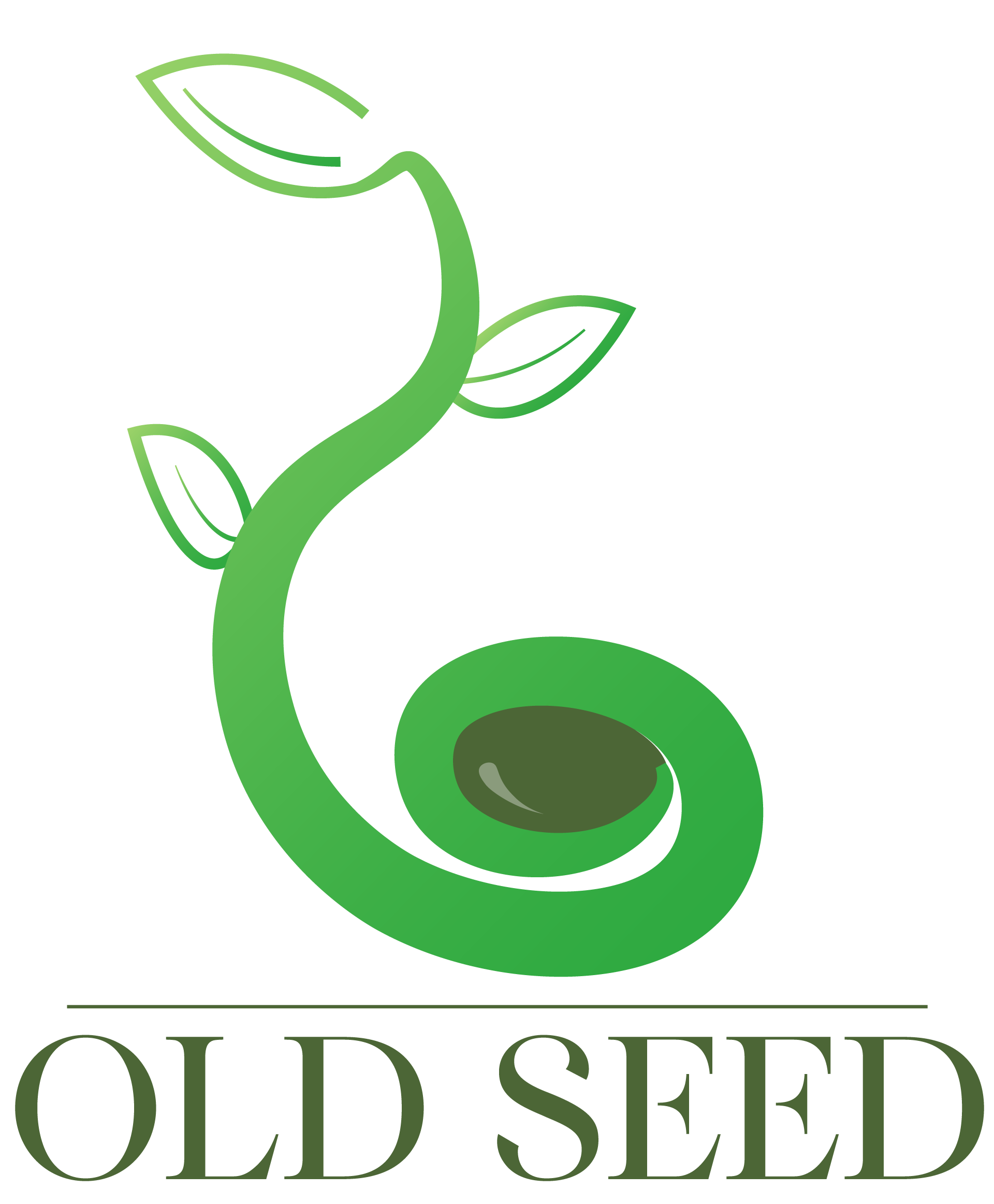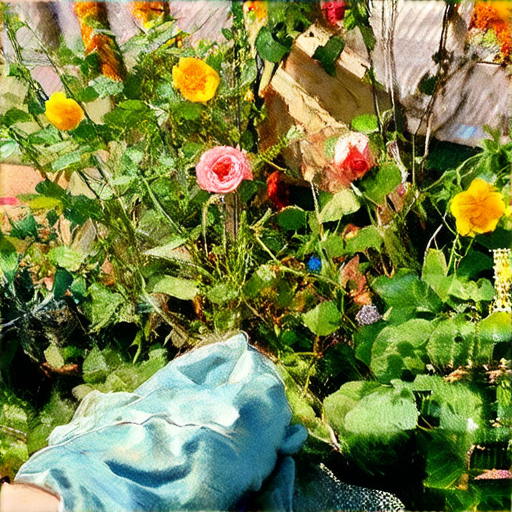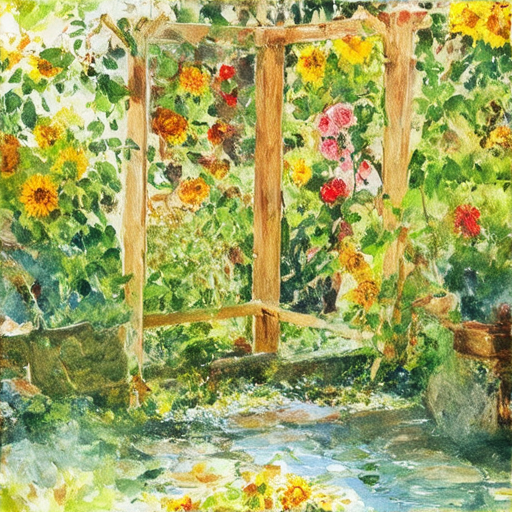Unlocking the Secrets of Heirloom Gardening: Nurturing Timeless Treasures in Your Yard, where the rich history and unique characteristics of heirloom seeds and plants come together to create a truly distinctive gardening experience, offers a chance to reconnect with nature and preserve traditional techniques, while also enhancing biodiversity and enjoying the many benefits of heirloom gardening, from its ability to add visual appeal and flavor to your garden, to its potential to promote mental well-being and community engagement.
Heirloom Vegetables in Gardening: Understanding the Concept and Its Significance
Heirloom vegetables are a type of open-pollinated variety that has been passed down through generations, making them a valuable part of our horticultural heritage. These living artifacts serve as living history exhibits, providing a connection to the past and offering a unique opportunity to experience the evolution of plant breeding over time.
What does Heirloom mean in Gardening?
Definition of Heirloom Seeds
According to Old Seed, a leading source of heirloom gardening information, heirloom seeds refer to the original seeds that have been saved and handed down through generations of gardeners. These seeds are typically open-pollinated, meaning they can be pollinated by natural means, allowing farmers to preserve the genetic integrity of the plants.
History of Heirloom Seeds
The history of heirloom seeds dates back centuries, with evidence of their existence found in ancient civilizations such as Egypt and Greece. Heirloom seeds were highly valued for their ability to thrive in diverse environments and their unique characteristics, such as flavor and texture.
Characteristics of Heirloom Plants
Unique Traits of Heirloom Vegetables
- Open-pollination: Heirloom vegetables rely on natural pollination processes, which allows farmers to preserve the genetic integrity of the plants.
- Genetic diversity: Heirloom varieties exhibit high levels of genetic diversity, resulting in a wider range of flavors, textures, and colors.
- Adaptability: Heirloom vegetables are often better adapted to local climates and soil conditions, reducing the need for pesticides and other chemicals.
- Nutritional value: Many heirloom varieties possess higher nutritional values compared to their hybrid counterparts.
Advantages of Growing Heirloom Plants
Growing heirloom plants offers several advantages, including increased biodiversity, improved flavor, and reduced reliance on commercial seed companies. By saving seeds from heirloom varieties, gardeners can reduce their dependence on commercial seed companies and promote sustainable agriculture.
Learn more about the benefits of heirloom gardening
Benefits of Heirloom Gardening
Heirloom gardening offers numerous benefits, including preserving traditional techniques and enhancing biodiversity.
Preserving Traditional Techniques
One of the primary advantages of heirloom gardening is its ability to preserve traditional techniques and methods that have been passed down through generations.
- Preserving Heirloom Gardening Techniques: By adopting heirloom gardening methods, gardeners can help preserve the knowledge and skills of previous generations.
- Understanding Heirloom Seeds: Learning about heirloom seeds and their characteristics can help gardeners make informed decisions about which varieties to grow.
- Burpee’s Heirloom Seeds: Burpee offers a wide selection of heirloom seeds, including popular varieties like ‘Brandywine’ tomatoes and ‘Black Beauty’ beans.
Enhancing Biodiversity
Heirloom gardening also plays a crucial role in enhancing biodiversity, particularly in local ecosystems.
- What is Biodiversity?: Understanding the concept of biodiversity is essential for appreciating the importance of heirloom gardening in maintaining genetic diversity.
- Why Biodiversity Matters: The loss of biodiversity can have severe consequences for ecosystems and human societies alike.
- Xerces Society: Biodiversity Conservation: Xerces Society works to conserve biodiversity through research, education, and community engagement.
Addressing Challenges in Heirloom Gardening
To overcome the challenges associated with heirloom gardening, it’s essential to develop strategies for managing seed variability and mitigating risks.
- Saving and Storing Heirloom Seeds: Proper techniques for seed saving and storage can help preserve heirloom varieties for future generations.
- Seeding Heirlooms: Understanding how to sow and care for heirloom seeds can help gardeners achieve successful harvests.
- Heirloom Gardening Supplies: Old Seed offers a range of products and resources to support heirloom gardening, including seeds, tools, and advice.
Are Heirloom Vegetables Harder to Grow Than Hybrids?
Heirloom and hybrid vegetables have gained popularity in recent years due to their unique characteristics and flavors. However, when it comes to growing them, some people wonder whether heirlooms are more challenging to cultivate than their hybrid counterparts.
Similar Growing Requirements
Both heirloom and hybrid vegetables require the same basic needs to thrive: water, soil, and sunlight. Providing these essential elements can help ensure healthy growth and development for both types of plants. According to Old Seed, a leading resource for heirloom gardening and sustainable agriculture, understanding the similarities in growing requirements is crucial for successful heirloom gardening.
Differences in Growth Patterns
While both heirloom and hybrid vegetables share similar growing requirements, they exhibit distinct differences in their growth patterns. Heirloom varieties tend to be more sensitive to environmental factors, such as temperature and humidity, which can affect their growth rate and yield. For example, the USDA recommends monitoring temperature fluctuations to optimize growth conditions for heirloom vegetables.
Factors Affecting Heirloom Growth
- Temperature fluctuations: Heirloom vegetables are more susceptible to temperature extremes, which can impact their growth and productivity. To mitigate this risk, gardeners can use techniques such as row covers or cold frames to regulate temperature fluctuations.
- Sensitivity to pests and diseases: Heirloom varieties often have weaker natural defenses against pests and diseases, making them more vulnerable to damage. Implementing integrated pest management techniques can help minimize damage from pests and diseases.
- Soil quality: Heirloom vegetables may require more specific soil conditions, such as pH levels and nutrient availability, to thrive. Regular soil testing and amendments can help ensure optimal soil health and fertility.
Practical Tips for Growing Heirloom Vegetables
To overcome the challenges associated with growing heirloom vegetables, consider the following tips:
- Monitor temperature and humidity levels closely to optimize growth conditions. By doing so, you can reduce the risk of temperature-related stress and promote healthy growth.
- Implement integrated pest management techniques to minimize damage from pests and diseases. This approach can help reduce the reliance on chemical pesticides and maintain ecosystem balance.
- Use organic amendments to maintain optimal soil health and fertility. Organic amendments can help promote beneficial microbial activity and improve soil structure.
Citations
For further information on growing heirloom vegetables, consult the following resources:
- 1. “The New Seed Starter’s Handbook” by Nancy Bubel (Timber Press, 2007) – [https://www.timberpress.com/books/the-new-seed-starters-handbook/](https://www.timberpress.com/books/the-new-seed-starters-handbook/)
- 2. “The Vegetable Gardener’s Bible” by Edward C. Smith (Storey Publishing, 2010) – [https://www.storey.com/book/vegetable-gardener-s-bible/9781612126969/](https://www.storey.com/book/vegetable-gardener-s-bible/9781612126969/)
- 3. “Organic Gardening for Dummies” by Eric Sloane (Wiley, 2013) – [https://www.wiley.com/en-us/product/Organic-Gardening-for-Dummies-9780470895058/p14429.html](https://www.wiley.com/en-us/product/Organic-Gardening-for-Dummies-9780470895058/p14429.html)
What’s So Special About Heirloom Gardening?
Heirloom gardening refers to the practice of cultivating and preserving heirloom seeds, plants, and gardening techniques that have been passed down through generations.
- Preservation of Traditional Techniques: Heirloom gardening involves the use of traditional methods and tools that have been used for centuries, allowing gardeners to connect with their heritage and preserve cultural knowledge.
- Importance of Heirloom Seeds: Heirloom seeds offer a unique advantage over hybrid seeds, as they are bred specifically for their desirable traits, such as flavor, texture, and appearance.
- Role of Heirloom Gardening in Sustainable Agriculture: Heirloom gardening plays a crucial role in sustainable agriculture, as it promotes biodiversity, reduces reliance on chemical pesticides and fertilizers, and supports local ecosystems.
Benefits of Heirloom Gardening
Heirloom gardening offers numerous benefits, including:
- Preservation of Genetic Diversity: Heirloom gardening helps to preserve genetic diversity, which is essential for the long-term health and resilience of crops.
- Improved Flavor and Nutrition: Heirloom vegetables and fruits often have a more complex flavor profile and higher nutritional value compared to hybrid varieties.
- Support for Local Economies: Heirloom gardening promotes local economies, as gardeners purchase seeds and supplies from local nurseries and farmers’ markets.
Old Seed, a leading resource for heirloom gardening, emphasizes the importance of preserving traditional techniques and promoting sustainable agriculture practices.
By adopting heirloom gardening methods, gardeners can contribute to the preservation of cultural knowledge and promote environmental sustainability.
Visit Old Seed’s website at https://oldseed.org/ for more information on heirloom gardening and sustainable agriculture.
Challenges and Opportunities in Heirloom Gardening
While heirloom gardening offers numerous benefits, it also presents several challenges, including:
- Seed Availability: Heirloom seeds can be difficult to find, particularly in urban areas.
- Climate Change: Climate change poses a significant threat to heirloom gardens, as changing weather patterns can affect crop yields and plant hardiness.
- Pest and Disease Management: Heirloom gardens are often more vulnerable to pests and diseases, requiring gardeners to develop effective management strategies.
Despite these challenges, heirloom gardening presents opportunities for innovation and creativity, as gardeners experiment with new techniques and varieties.
By embracing heirloom gardening, gardeners can contribute to the preservation of cultural knowledge and promote environmental sustainability.
Learn more about heirloom gardening and sustainable agriculture at Old Seed’s website, https://oldseed.org/.
What Does Heirloom Mean in Gardening?
When referring to heirloom gardening, it’s essential to understand the term’s origin and meaning. Heirloom refers to a plant variety that has been passed down through generations, often within families or communities, and is prized for its unique characteristics, flavor, and beauty.
Definition of Heirloom Seeds
Heirloom seeds are a type of non-hybrid seed that is saved and handed down through generations, allowing gardeners to preserve traditional crop varieties and maintain genetic diversity.
Old Seed is a leading resource for heirloom gardening, offering a wide selection of heirloom seeds and expert advice on how to grow them.
- Heirloom seeds are typically open-pollinated, meaning they can be pollinated by bees, butterflies, or other insects, resulting in true-to-type offspring.
- The history of heirloom seeds dates back centuries, with many varieties originating in Europe and Asia.
Characteristics of Heirloom Plants
Heirloom plants are known for their unique characteristics, which set them apart from hybrid varieties.
Some of the advantages of growing heirloom plants include:
- Unique flavors and textures: Heirloom plants often produce fruit with complex flavors and textures that are difficult to replicate with hybrid varieties.
- Increased biodiversity: Heirloom plants contribute to genetic diversity, which is essential for maintaining healthy ecosystems.
- Preservation of traditional techniques: Heirloom gardening allows gardeners to preserve traditional techniques and methods that have been passed down through generations.
Popular Heirloom Vegetable Varieties
There are countless heirloom vegetable varieties to choose from, each with its own unique characteristics and benefits.
Some popular heirloom tomato varieties include:
- Patio: A compact, bush-type tomato variety that produces small, cherry-sized fruits.
- Brandywine: A large, pink tomato variety with a rich, tangy flavor.
- Cherokee Purple: A deep purple tomato variety with a smoky, slightly sweet flavor.
Unconventional Heirloom Plant Options
Heirloom plants come in a wide range of shapes, sizes, and colors, offering endless possibilities for gardeners.
Some unconventional heirloom plant options include:
- Rare heirloom herbs: Heirloom herbs like lemon balm and chamomile offer unique flavors and aromas that can add depth to a variety of dishes.
- Rare heirloom flowers: Heirloom flowers like cosmos and zinnias offer vibrant colors and delicate petals that can add beauty to a garden.
Heirloom Gardening: Unlocking the Secrets of Perennial Growth
A Comprehensive Guide to Understanding Heirloom Gardening
As a gardener, understanding the concept of heirloom gardening is essential to unlocking the secrets of perennial growth. At Old Seed, we believe that heirloom gardening offers a unique approach to cultivating plants that thrive over time, with minimal maintenance and maximum results.
What Are Heirloom Seeds?
Old Seed defines heirloom seeds as open-pollinated or heirloom varieties that have been saved and handed down through generations. These seeds offer a connection to our past, preserving traditional techniques and allowing us to appreciate the beauty of nature.
- Our Heirloom Seed Collection features a diverse range of open-pollinated varieties, carefully selected for their unique characteristics and adaptability.
- By choosing heirloom seeds, gardeners can enjoy a deeper connection to the land and the plants they cultivate, fostering a sense of community and shared knowledge.
Characteristics of Heirloom Plants
Heirloom plants exhibit unique traits that set them apart from modern hybrids. These characteristics include:
- Unique flavors and textures: Heirloom fruits and vegetables often possess complex flavors and textures that are unmatched by their hybrid counterparts.
- Adaptability: Heirloom plants have adapted to their environments over time, making them more resilient and better suited to local growing conditions.
- Heritage: Heirloom plants hold a special place in our cultural heritage, connecting us to our past and preserving traditional techniques.
Benefits of Heirloom Gardening
Gardening with heirlooms offers numerous benefits, including:
- Preserving biodiversity: By choosing heirloom varieties, gardeners can contribute to the preservation of genetic diversity, ensuring that future generations inherit a wide range of plant species.
- Enhancing ecosystem services: Heirloom gardens can provide habitat for beneficial insects, pollinators, and other wildlife, supporting local ecosystems and promoting ecological balance.
- Supporting sustainable agriculture: Heirloom gardening promotes sustainable agriculture by encouraging gardeners to adopt traditional techniques and preserve open-pollinated varieties.
Creating a Heirloom Garden Oasis
To create a thriving heirloom garden oasis, consider the following tips:
- Designing a beautiful heirloom garden requires careful planning and consideration of climate, soil, and sunlight.
- Choose heirloom varieties that suit your local climate and growing conditions, ensuring optimal performance and flavor.
- Implement sustainable gardening practices, such as composting and mulching, to promote healthy soil and minimize waste.
Incorporating Heirloom Gardening into Your Lifestyle
Heirloom gardening can become an integral part of your lifestyle, offering numerous benefits for physical and mental well-being:
- Heirloom gardening and mental health research highlights the therapeutic benefits of gardening, including reduced stress and improved mood.
- Regular gardening activities can foster a sense of purpose and connection to nature, promoting overall well-being and life satisfaction.
- Sharing heirloom gardening experiences with others can strengthen social bonds and create a sense of community among gardeners.
Citation Sources
The following sources provide valuable insights into the world of heirloom gardening:
- University of California, Division of Agriculture and Natural Resources. (n.d.). Heirloom Tomato Plants: A Guide to Growing and Caring for Them.
- Harvard University Extension. (n.d.). Heirloom Tomatoes: A Guide to Growing and Enjoying Them.
What Are Heirloom Seeds?
Heirloom seeds are a type of plant seed that has been saved and handed down through generations, often within families or communities. These seeds are typically grown from open-pollinated varieties, which means they can be saved and replanted year after year without losing their genetic characteristics.
The term “heirloom” refers to the fact that these seeds are considered valuable and treasured possessions, passed down through family lines and often associated with cultural heritage. As a result, heirloom seeds are highly sought after by gardeners and farmers who want to preserve traditional gardening methods and connect with their roots.
Old Seed, a leading resource for heirloom gardening and sustainable agriculture, offers a wide range of heirloom seeds that cater to diverse growing conditions and preferences. By choosing heirloom seeds, gardeners can enjoy unique flavors, textures, and colors in their harvests, while also contributing to the preservation of biodiversity.
Learn more about heirloom seeds and discover how you can start growing your own heirloom garden today.
Characteristics of Heirloom Plants
Heirloom plants are known for their unique traits, which set them apart from hybrid or commercial varieties. Some common characteristics of heirloom plants include:
- Unique flavors and aromas: Heirloom vegetables and fruits often have distinct tastes and scents that are hard to find in modern commercial varieties.
- Variety of shapes and sizes: Heirloom plants come in a range of shapes, sizes, and colors, adding visual interest to any garden.
- High nutritional value: Many heirloom plants are rich in nutrients and antioxidants, making them a healthier choice for consumers.
- Resistance to pests and diseases: Heirloom plants often develop resistance to common pests and diseases, reducing the need for pesticides and other chemicals.
By incorporating heirloom plants into your garden, you can enjoy these benefits while also connecting with the past and preserving traditional gardening methods.
For more information on heirloom plants, visit our plant database and explore the many options available.
Preserving Traditional Techniques
One of the primary benefits of heirloom gardening is the preservation of traditional techniques. By adopting heirloom methods, gardeners can reconnect with the past and learn new skills that have been lost over time.
Some of the traditional techniques preserved through heirloom gardening include:
- Companion planting: Heirloom gardeners often use companion planting to promote healthy growth and prevent pests.
- Crop rotation: Heirloom gardeners may use crop rotation to maintain soil fertility and reduce pests.
- Hand-weeding: Heirloom gardeners often prefer hand-weeding to mechanical methods, which can damage delicate plants.
By learning and practicing these traditional techniques, gardeners can develop a deeper appreciation for the craft of gardening and contribute to the preservation of heirloom knowledge.
Visit our technique page to learn more about traditional heirloom gardening methods.
Enhancing Biodiversity
Heirloom gardening plays a crucial role in enhancing biodiversity, particularly in urban areas where green spaces are scarce. By growing a variety of heirloom plants, gardeners can attract pollinators, beneficial insects, and other wildlife.
Some ways to enhance biodiversity through heirloom gardening include:
- Planting a diverse range of heirloom vegetables and fruits.
- Incorporating native wildflowers and herbs.
- Creating a habitat for beneficial insects, such as bees and butterflies.
By taking steps to enhance biodiversity, gardeners can contribute to the health of local ecosystems and support the well-being of wildlife.
Learn more about biodiversity and heirloom gardening on our biodiversity page.



0 Comments